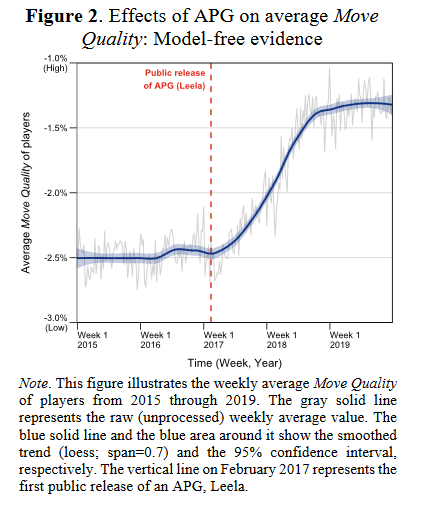Irreplaceable: Unraveling the Subtleties of AI, Art, and AI Art

I'm wouldn't consider myself an artistic person, and my appreciation for art is differentiated from the common denominator in only my taste of music, which is dominated by Metal and other alternative genres. Regardless, I've been thinking a lot about the arts lately, especially with the rise of anti-AI art sentiments and the explosion of Cara (and its Vercel bill...). It couldn't be clearer that the application of AI in the arts, and especially in visual arts, is controversial.
The Creative Human
We've all made art before, and make art with every creative action we employ. Expressing emotions and thoughts concisely in conversation is art. Writing an email with an appropriate level of warmth is art. Writing clear and elegant code is art. Although seemingly polluted by the need for functionality, all of these activities provide an avenue for aesthetic impact. Of course, when people think of the arts, they think of endeavors not tainted by industry and practicality. They think of the visual arts, acting, dancing, and music. Despite this, I would argue that to be human is to be creative and to understand the creativity of others. If life is a stage, then aren't we all artists in some way?
What this means for us is that art is deeply personal. Our appreciation for art is deeply personal, and artistic quality seems to be the most subjective thing there is. However, artistic quality, in reality, is as subjective as everything else. We have no need for bad art except to provide a foil against good art, and this is the same way we opine on every act of consumption. Just like how the market doesn't reward the creation of useless thingamajigs, doohickeys, and contraptions, the market doesn't reward art deemed by people to be "not as good".
As someone who listens to less popular music, I find it hard to square the circle that is the low value placed on art I deem to be of superior quality to most of the things that play on the radio and in shopping malls and restaurants. Why is it that Obscure Album by Medium-Sized Band doesn't get the appreciation it deserves? Why is it that no one but me understands the genius on display? The bitter pill I have to swallow is that art I consider to be of high quality might not be considered as such in the market. The market, instead, encourages the production of the most accessible art, possibly resulting in smaller artists being choked out or feeling otherwise alienated from the market.

Spontaneous Order
On the surface level, the phenomenon I had described above suggests that good art that pushes the boundaries oftentimes goes unrewarded due to its inaccessibility. This is true, and has been for millennia. The success of the artist depends greatly not just on luck, but also on skill. Today, marketing to increase exposure is critical to get the word out that you have created something. Producing good art isn't enough to make a career, even if it's "good" according to most people. Art, just like most other career paths, requires an intersection of a multitude of factors.
And yet, art has been flourishing. It seems like everyone is taking a stab at it in some way or another, and now it's easier than ever to get started, with online communities, a vibrant gig economy, and a barrier to entry low enough to accommodate anyone who can afford the time. Art is a difficult profession where standing out is hard and making a career out of it is even harder, but at the same time, the scope of art as a hobby and a source of supplementary income has expanded in recent years.
Maybe the wisdom of the crowd that manifests itself in spontaneous order has the most accurate understanding we can come to of the value of art, even though it can't be 100% accurate. This means that, unfortunately, more niche artists will stay niche until the spotlight of the zeitgeist shines on them, before they too fade into darkness as the revolution continues. It seems that, paradoxically, the only way to have a chance is to balance between both accessibility and innovation, to walk the fine line between artistry and commercial viability. This is the contract that must be accepted by the artist and the consumer.
To this end, originality is a cardinal virtue. Having an original style, creating an original work: these are important considerations. I remember how I found myself discovering a unique inner voice after years of writing, and especially writing poetry. Like any artist, I believed that I was being creative — that I was being original.

The Artist and the Engineer
Open-source culture doesn't care about originality. The cultural contrast between the Engineer and the Artist has resulted in some decisions by engineers and scientists that artists find baffling and ultimately harmful, such as the rise of AI-generated art. The Engineer continues with making the creation of art accessible to all without paying any respect to the possessiveness that comes from the importance of originality to the Artist.
Generative AI is a game-changer. As I've explained in my post on my concerns regarding AI (Why Artificial Intelligence Keeps Me Up at Night), generative AI has the chance to make many artists redundant, especially for small-scale jobs that do not require the creativity that only humans can provide. However, I also mentioned how we can take solace in the fact that AI will always lag behind humans when it comes to artistic innovation. To be human is to be creative; only we can truly innovate and bring the scene forward. GenAI will pressure artists to innovate, and if necessity is the mother of invention, we might just see art flourish further than we had ever imagined.
A 2021 study has shown that the release of an AI-powered Go program (for the board game Go, not the programming language) has caused skill levels for human players to improve. AI helps humans to see things in ways that they hadn't been able to before, even in games that are centuries old, even for players that have played the game for their entire lives. Perhaps one consequence of the proliferation of AI in art is that consumers increasingly want to feel the touch of humanity in the art they consume, and the schism between functional art and non-functional art finally becomes realized.

I might be painting broad strokes (ha), but there needs to be more nuance in the discussion of AI as a practical tool even in the places it might disrupt the most. The complete and utter rejection of it is reactionary and ultimately harmful. AI has a fair share of problems, especially with data privacy, but the only difference between a human learning from and imitating your art and an AI model learning from and imitating your art is that one of scale. It's a worry and concern that stems from the fear of disruption, and fair enough, disruption makes lives harder with its ability to make any industry more cutthroat than it already is. Is there a way to reduce the social impact of such a change, and manage the large scale of imitation that has been made possible by generative AI?
Regardless of what communities or countries try to do to stop them, companies will never put on hold the further development of more and more advanced GenAI models. We can't prevent AI from merging with the art scene because AI is already here, whether you like it or not. There aren't many solutions I can think of to reduce the impact of AI on the industry (especially with regard to visual art), but more serious art education, especially at the community level, will probably help drift consumer tastes to a point more accommodating to artists, with all of their flourishes, mistakes, bodies, emotions, thoughts, experiences, and humanity. The discussion of AI, Art, and AI Art deserves subtlety as humanity prepares itself culturally and philosophically for the next great industrial revolution.




